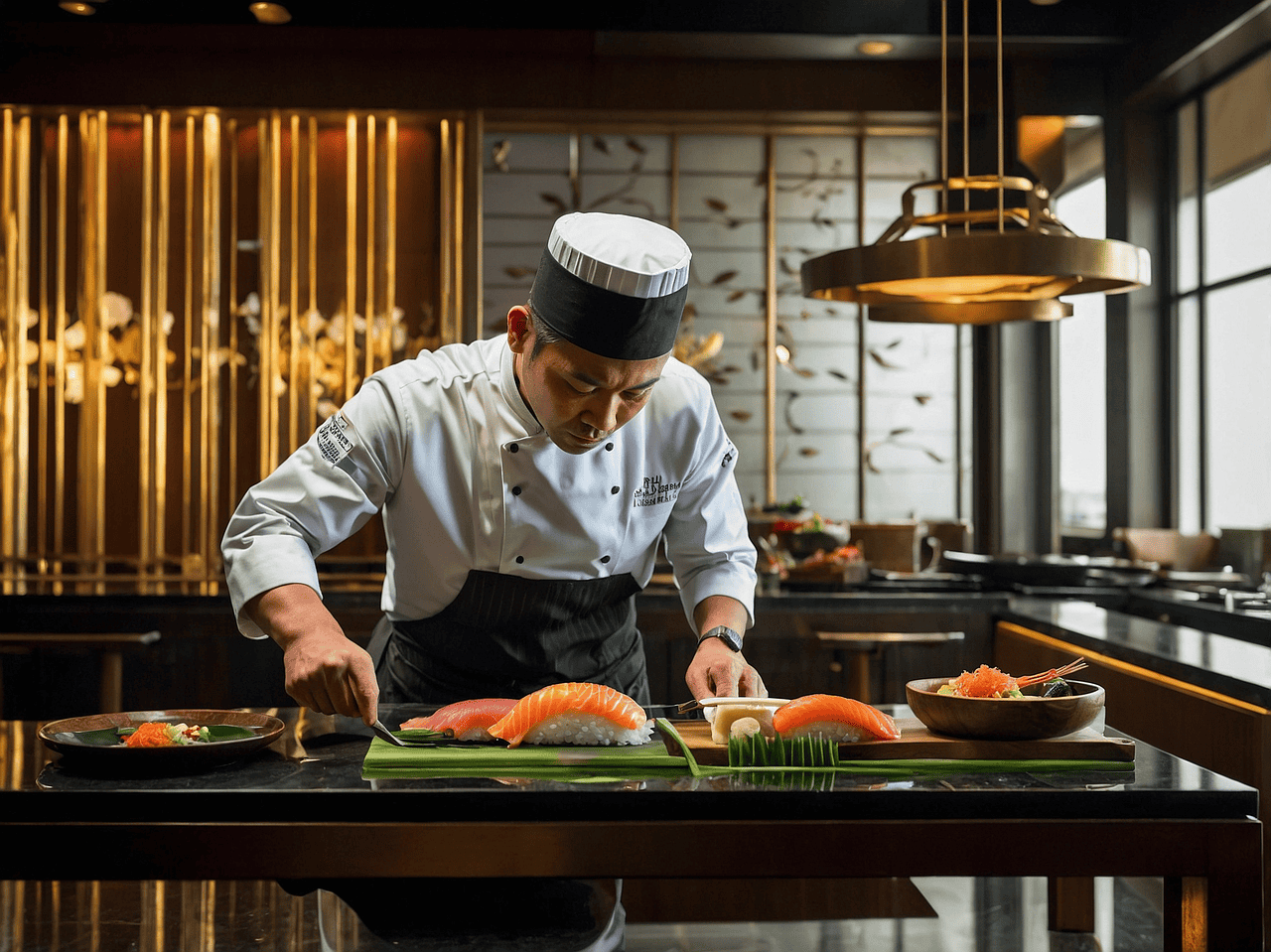Singapore Restaurant Expansion with a Silicon Valley Strategy
Grow your Singapore restaurant brand in the U.S. with expert guidance and proven Silicon Valley business strategies. Start your global journey today. Schedule a CallElevate Your Singaporean Restaurant Brand | Seamless Expansion into the U.S. with Silicon Valley Insights
We are dedicated to empowering Singaporean and Asian food and beverage brands to navigate the exciting journey of entering the U.S. market. Our expert team utilizes cutting-edge, data-driven strategies inspired by the innovative spirit of Silicon Valley, ensuring that your brand not only makes a successful entry but also flourishes in one of the most vibrant and competitive business environments in the world.
Request More Information

“Who We Are”
Your Global Restaurant Strategy Partner
With years of experience guiding top Asian brands like Irvins Salted Egg and Killiney Kopitiam in the U.S. market, our team blends culinary authenticity with Silicon Valley’s startup playbook. Whether you’re launching your first international outlet or scaling across states, we’re your trusted partner in global growth.
Testimonial:
“Thanks to David Mitrof’s strategy team, we went from one location in Singapore to three outlets in California within 18 months.”
— F&B Group CEO, VeganBurg
Singapore → USA
Contact us today to schedule a free consulting session to review how we may be able to help. Piedmont Avenue Consulting is a San Francisco Bay Area based business development and marketing consulting firm who creates brand awareness, strengthens customer loyalty, and increases lead generation through leveraging new technologies and streamlining business processes.
Why Expand from Singapore to the U.S?
Key Reasons:
Booming Demand for Authentic Asian Cuisine – Cities like Los Angeles, New York, and San Francisco are culinary melting pots craving new flavors.
Global Recognition of Singaporean Food Culture – Clean, innovative, and flavorful: the world is ready.
Proven Success Stories
- Irvins Salted Egg – Now found in U.S. retail chains and eCommerce platforms.
- Killiney Kopitiam – Opened its first West Coast location in Santa Clara, California.


Silicon Valley Strategies for F&B Brands
Run Your F&B Expansion Like a Startup
What restaurants can learn from tech companies.
Core Pillars
- Agile Branding — Adapt your menu, pricing, and aesthetic based on U.S. customer feedback.
- Fundraising & Partnerships — Explore investor-backed models or JV opportunities.
- Scalable Ops — Franchising, dark kitchens, licensing.
- Digital-First Marketing — Email funnels, influencer outreach, performance campaigns.
Case Studies & Testimonials
Real Results from Asian Brands Expanding West
Testimonial:
“Our brand became a bestseller in L.A. within 6 months thanks to this expansion roadmap.”
— Asian Restaurant Founder
“We never thought of franchising until we met the team—now we’re planning 10 U.S. locations.”
— COO, Singapore Café Chain
Marketing Trends

Branding & Customer Experience: Bringing Your Singapore Brand to Life in the U.S.
Expanding your restaurant brand from Singapore to the United States is more than a business move — it’s a cultural translation. Your brand is not just your logo or your menu; it’s the emotion, memory, and identity guests experience every time they walk through your doors. Maintaining that essence while appealing to a new audience requires a strategy that connects your Singapore roots with U.S. consumer expectations.
1. Understanding Brand Localization
Brand localization means adapting your concept to a new market while preserving your core identity. For restaurants, it’s not just about translating words — it’s about ensuring your food, service, and atmosphere communicate the same story in a different cultural context.
American diners appreciate authenticity and storytelling. Your goal is to introduce your Singaporean heritage in a way that feels both genuine and approachable. This could mean refining menu descriptions, adjusting portion sizes, or incorporating familiar local touches while maintaining your signature flavors.
For example, a hawker-style restaurant might design its U.S. location to capture the lively spirit of Singapore’s food centers — communal tables, vibrant colors, and energetic ambiance — presented in a modern, comfortable setting that meets American dining expectations.
2. Visual Identity & Interior Design
Your space is one of the most powerful expressions of your brand. Layout, lighting, color palette, furniture, uniforms, and packaging all communicate who you are. Consistency across these elements builds recognition and trust.
When expanding to the U.S., collaborate with local designers who understand both American tastes and your brand’s cultural DNA. Add subtle yet meaningful details — artwork by Singaporean artists, textures inspired by hawker markets, or scents reminiscent of Southeast Asian spices. These cues create a multisensory experience that connects emotionally with guests.
Each design choice should reflect your concept: a fine-dining brand might use minimalist design and soft lighting, while a casual street-food brand might feature bold colors and open kitchens that showcase the cooking process.
3. Staff Training & Brand Ambassadorship
Your team embodies your brand every day. Every greeting, menu recommendation, and guest interaction shapes perception. Develop training programs that teach not only service skills but also your brand story, values, and heritage.
Include modules on communication style, storytelling, and cultural awareness. Empower staff to act as brand ambassadors who proudly represent your identity and share your story with guests.
Many international restaurants send experienced trainers from their home country to guide early operations abroad, ensuring brand culture is established before local teams take over.
4. Designing the Customer Journey
The customer experience includes every touchpoint — before, during, and after the visit.
-
Before: Use your website, social media, and reviews to convey your brand story and menu.
-
During: Ensure ambiance, service, and presentation consistently match your promise.
-
After: Engage customers through loyalty programs, thank-you emails, and social media.
For U.S. locations, integrate technology like mobile reservations, digital menus, and contactless payments to create convenience and efficiency.
5. Creating Emotional Connection
Great restaurant brands don’t just serve food — they create moments that people remember. By combining authentic Singaporean flavors with intentional design and warm, consistent service, your brand will stand out in a competitive U.S. market.
A well-defined identity and cohesive experience ensure that whether guests visit your flagship in Singapore or your new restaurant in California, they feel the same sense of quality, care, and culture.
Your story should travel as seamlessly as your recipes — a brand that feels familiar, no matter where it’s found.

Marketing & PR for Restaurant Launch: Turning Openings Into Success Stories
Expanding a restaurant brand into the U.S. market requires more than great food — it demands a powerful restaurant marketing plan that blends storytelling, strategy, and community engagement. From pre-launch buzz to post-opening momentum, a well-executed marketing and PR approach ensures your restaurant not only opens successfully but becomes a recognized name in the American dining scene.
1. Building Anticipation Before Opening
Every successful launch starts long before the doors open. The pre-launch phase focuses on building curiosity and awareness through consistent storytelling. A “coming soon” campaign, behind-the-scenes videos, and sneak peeks of signature dishes create excitement and anticipation.
Social media is one of the most effective tools at this stage. Platforms like Instagram, TikTok, and YouTube allow restaurants to connect visually and emotionally with potential customers. Partnering with local food influencers and bloggers amplifies your reach and adds credibility to your brand. Meanwhile, collecting emails through a simple landing page can help you build an audience to invite to soft openings or exclusive tasting events.
2. Public Relations: Crafting a Memorable Brand Story
A strong PR strategy brings your restaurant’s unique story to the forefront. Media outlets are drawn to authenticity — the inspiration behind your concept, your founder’s journey, or the fusion of Singaporean flavors with U.S. trends. Sharing this narrative through targeted media pitches and press releases builds emotional connection and brand awareness.
Secure coverage in publications such as Eater, Time Out, or local newspapers to position your restaurant as a fresh and exciting addition to the U.S. dining landscape. Hosting grand opening events and inviting media and influencers ensures your story is shared widely from day one.
3. Digital Marketing and Paid Advertising
In the U.S., online visibility is essential. A localized SEO strategy helps your restaurant appear in searches for phrases like “best Singaporean restaurant in New York” or “Asian fusion dining in Los Angeles.” Combine that with Google Ads, social media ads, and Yelp promotions to drive immediate traffic and reservations.
Using geofencing and retargeting ads helps you stay top of mind among nearby audiences. Encouraging happy customers to leave positive reviews on Google and Yelp also strengthens your local search rankings and brand reputation.
4. Experiential and Community Marketing
Beyond digital efforts, community engagement transforms your restaurant into a trusted neighborhood favorite. Participating in food festivals, collaborating with local chefs, or hosting charity dinners introduces your brand to new audiences while reinforcing authenticity.
Creating Instagrammable design moments — like a signature dish or decor element — encourages organic sharing and free publicity. Supporting local causes and sponsoring community events builds goodwill and long-term loyalty.
5. Sustaining Growth After the Launch
Marketing doesn’t stop once the doors open. Keep your audience engaged through seasonal campaigns, new menu announcements, and stories that highlight your team and culture. Leverage technology tools like CRM systems and digital loyalty programs to deliver personalized experiences that turn first-time guests into repeat customers.
In Summary
A strong F&B launch strategy for the U.S. combines pre-opening buzz, strategic PR, targeted digital advertising, and authentic community engagement. When executed consistently, your marketing plan turns your restaurant’s grand opening into the foundation for lasting success.
Ready to Scale Your Restaurant Internationally?
5 Keys to Expanding a Restaurant Overseas
Thinking about taking your restaurant concept global? International expansion can unlock major growth — but only if you plan strategically. Here are five critical keys to success when expanding a restaurant overseas:
1. Understand the Local Market
Before choosing a location, deeply research:
-
Local dining habits and food culture
-
Competitor landscape
-
Price sensitivity and economic conditions
-
Ideal neighborhoods or zones for your concept
Pro Tip: Consider hiring local market consultants or running a test pop-up before committing fully.
2. Adapt Your Concept — Without Losing Your Brand
What works at home may need adjusting abroad:
-
Tailor the menu to suit local tastes and dietary norms
-
Adjust branding to fit cultural preferences
-
Train staff to deliver the brand experience, even in a different language
Balance is key: Stay true to your brand DNA while staying culturally relevant.
3. Know the Legal and Regulatory Landscape
Each country has unique regulations regarding:
-
Food safety and health codes
-
Employment and labor laws
-
Business licensing and permits
-
Franchise or foreign ownership restrictions
Avoid surprises: Work with local legal counsel from the start.
4. Build the Right Local Team
Your team on the ground can make or break your expansion:
-
Hire experienced local management
-
Invest in training to ensure brand consistency
-
Foster cross-cultural communication between HQ and the new location
Tip: A mix of expat leadership and local talent often works best.
5. Plan Financially for the Long Game
International expansion is rarely profitable overnight:
-
Budget for higher startup costs and longer ROI timelines
-
Factor in currency exchange, taxation, and supply chain challenges
-
Consider joint ventures or licensing as lower-risk entry options
Think big, start lean: Prove the concept before scaling across borders.
Have questions? Let’s talk about your F&B vision.
Contact us today to schedule a free consulting session to review how we may be able to help. Piedmont Avenue Consulting is a San Francisco Bay Area based business development and marketing consulting firm who creates brand awareness, strengthens customer loyalty, and increases lead generation through leveraging new technologies and streamlining business processes.



